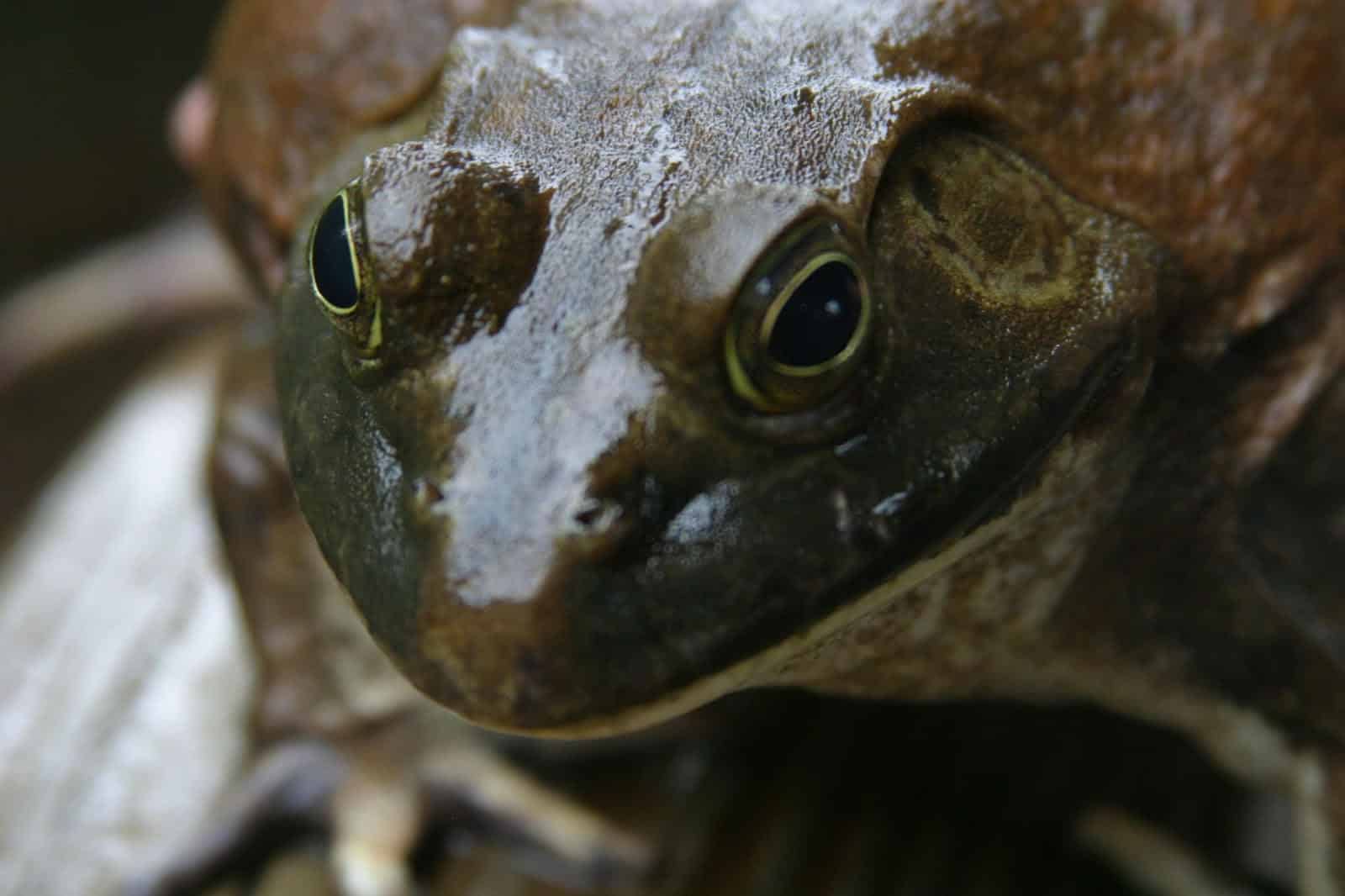Arkansas goose hunters look forward to continued spring ‘snowstorms’
ON 02-23-2021
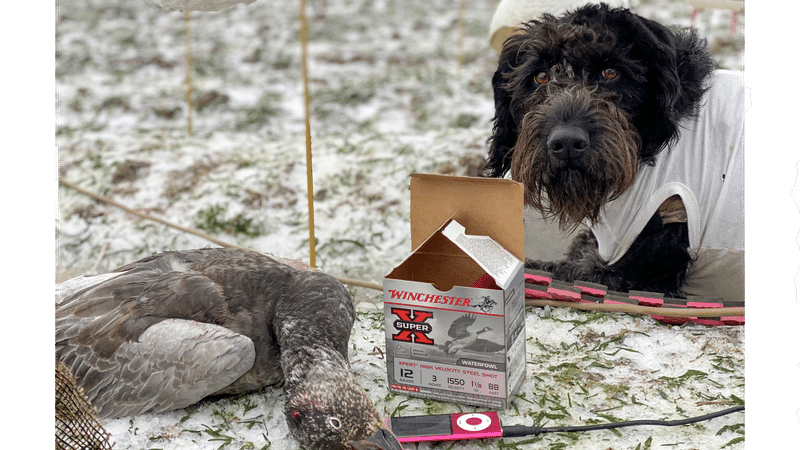
Feb. 23, 2021
Randy Zellers
Assistant Chief of Communications
WEST MEMPHIS — The polar vortex that descended on Arkansas and many other states to the north prompted hundreds of duck and goose hunters throughout The Natural State to ask if the birds finally arrived. With warmer-than-normal conditions across northern states during most of the season, ducks didn’t have to travel far to find the food and cover they need to build up for breeding and nesting season. Meanwhile, lack of unpressured flooded habitat may have prevented ducks and geese from flocking to traditional haunts in some parts of Arkansas. Hunters still can enjoy plentiful shooting and help conservation efforts by hunting snow geese during a special waterfowl season that runs well into spring.
Snow geese are a medium-sized goose, roughly the size and weight of the white-fronted geese many hunters enjoy chasing during regular duck and goose seasons. The two species of snow goose (lesser and greater) both have two distinct color morphs, one being solid white with black wingtips and the other having a sooty blue-gray body with a white head. A third goose species in the conservation order is Ross’s goose, which is nearly identical to snow geese except it is somewhat smaller (just a tad larger than a mallard) and has a short, stubby triangular bill and a more rounded head.Older Ross’s geese will begin to develop small wartlike bumps on the base of their bill called caruncles.
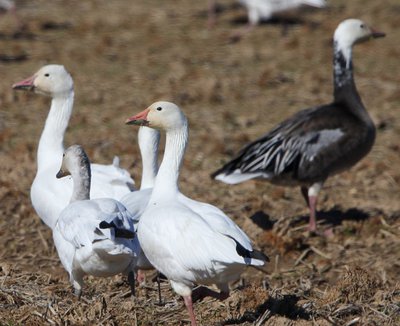
Collectively known as “arctic geese” these three species saw huge population increases about two decades ago, so much so that they have literally started to eat themselves out of house and home in portions of their range. Biologists began to see evidence of habitat degradation in the sub-Arctic Tundra and now portions of the Arctic, where these species migrate through as well as nest along with other migratory birds. The issue was simply too many geese on the landscape. In order to curb the population, biologists were able to convince Congress to enact the Arctic Tundra Habitat Emergency Conservation Act in 1999. This act, also known as the “Light Goose Conservation Order” expanded the opportunity for hunters to reduce snow goose populations outside of normal waterfowl seasons.
The Light Goose Conservation Order is open until April 25, 2021, but most of the action typically occurs throughout February and into early March. During the conservation order, hunters have no daily limit on birds, they do not have to limit their shotgun’s magazine capacity, may hunt from 30 minutes before sunrise until 30 minutes after sunset, and can even use electronic calls, which are strictly forbidden during regular duck and goose seasons. All of these liberalizations are in an effort to increase harvest as much as possible on the birds.
“Many regulations in place to manage harvest are suspended during the conservation order,” Naylor said. “But that doesn’t mean snow goose hunting is easy. They travel in huge flocks, which presents some unique challenges for hunters.”
One obstacle to overcome is to convince the birds in the air that your spread is large enough to be worth joining. A large spread of duck decoys may number in the hundreds, but a hundred decoys isn’t even close to a good spread for snow geese.
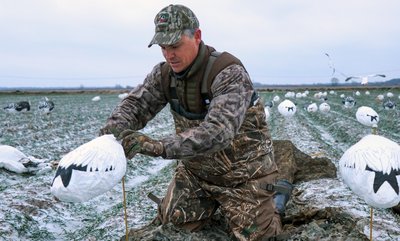
“We’ll typically set out a thousand or so,” Jason “Buck” Jackson, AGFC wetlands program coordinator for the AGFC, said. “But a large part of that is white windsocks that just give motion and a similar shape to a goose. We will still put out dozens of full-body decoys and shells that are more realistic near the areas where we want the birds to focus their attention and land.”
The large flocks flying overhead also mean you have that many more eyes to fool when they come down to take a look. Some hunters will use layout blinds and completely grass them in, while others try to become one with the decoys.
“If we can get away with it, I prefer to have all hunters wearing white,” Naylor said. “That way they’re adding to the spread and you might get away with a little movement, but they’re still very wary birds. You can pile a few of the decoys around you as well to maybe hide a little better if you fell like you’re standing out.”
Large flocks of snow geese also mean many mouths to feed, and snow geese are notorious for picking one field clean one day then moving to another nearby field by the time hunters are able to get set up for the next day. Hunters looking for snow goose success have to gain access to as much land as they can, knowing only a few acres of the thousands they cover may be productive.
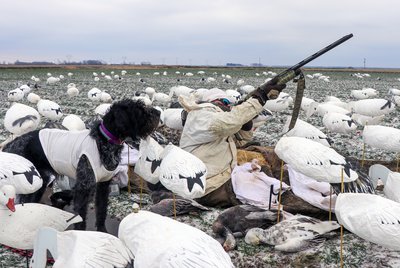
“You have to stay on top of the conditions and the birds’ locations,” Jackson said. “It’s a good idea to have a few friends covering different areas and combining your efforts to make it happen. You’re also going to want a lot of hunters in the field to make buying, setting and picking up decoys more manageable. There will be plenty of shooting for everyone if you hit it right.”
Has the conservation order managed to reduce Arctic goose populations? The short answer is, “Not enough.” That’s according to the Arctic Goose Joint Venture, a continent-wide partnership established under the North American Waterfowl Management Plan that includes federal, state and Canadian provincial agencies as well as conservation organizations in the United States and Canada. The number of snow geese taken by hunters definitely has increased thanks to the conservation order, but damage to the migration and breeding grounds has continued. More drastic measures are possible, but Naylor and many other biologists believe hunting is the most socially acceptable option if hunters will continue to get on board.
“Hunters are always our partners in the conservation of waterfowl, and this is a case where we can really step up our efforts to help by doing what already love to do,” Naylor said.
To participate in the snow goose conservation order, hunters need only a valid hunting license from any state, and a free Snow Goose Conservation Order Permit, which is available through any AGFC license vendor as well as online at www.agfc.com.
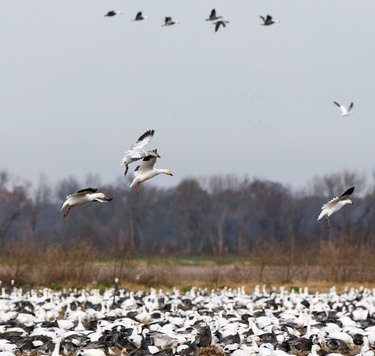
“We need the permit in place to be able to quantify the number of hunters participating as well as be able to administer post-hunt surveys to selected hunters to determine effectiveness,” Naylor said. “Just like with the Harvest Information Program, if you’re hunting snow geese, we need you to have it, but if you do not plan to hunt them, please don’t get the extra license just because it’s free. All those ‘just in case’ licenses can blur the picture of how much harvest is going on and how we can continue to manage this large population of geese.”
Visit www.agfc.com/en/hunting/migratory-birds/light-goose-conservation-order for more information on snow goose hunting and how to participate.
For more information about the Arctic Goose Joint Venture, visit https://www.agjv.ca.
A cookbook of proven recipes also is available from the joint venture at https://www.agjv.ca/wp-content/uploads/2017/11/snowgoosecookbook.pdf.
Recent News
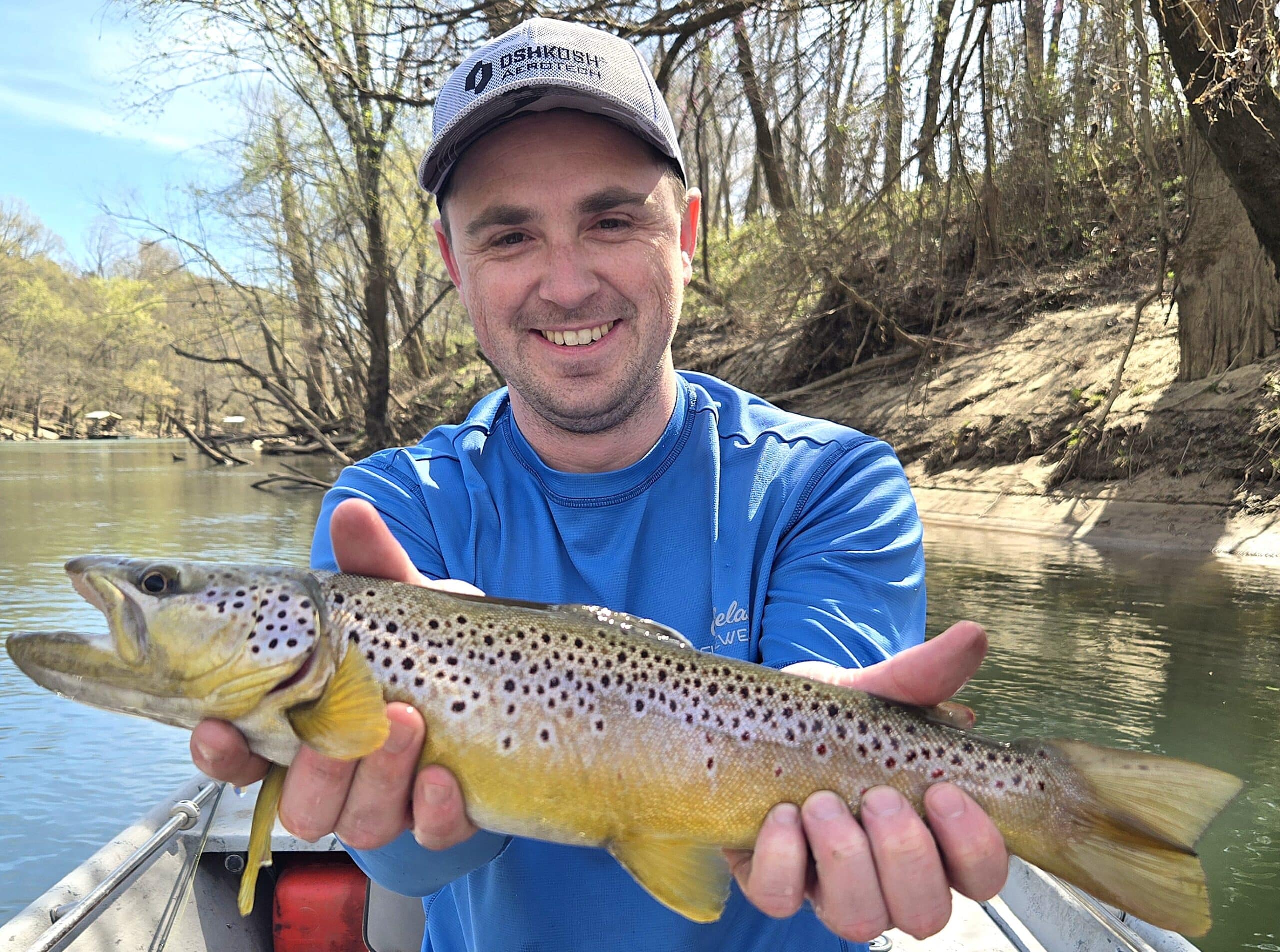
Arkansas Wildlife Weekly Fishing Report
Apr. 10, 2025
Subscribe to Our Weekly Newsletter E-mails
Don’t miss another issue. Sign up now to receive the AGFC Wildlife Weekly Newsletter in your mailbox every Wednesday afternoon (Waterfowl Reports are published weekly during waterfowl season and periodically outside the season). Fishing Reports arrive on Thursdays. Fill in the following fields and hit submit. Thanks, and welcome!

